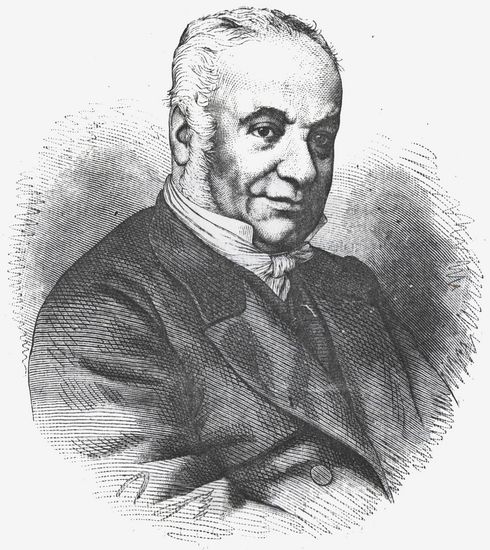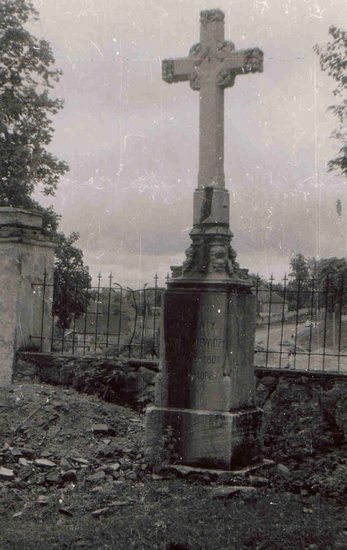Konstanty Tyszkiewicz was born on February 5, 1806. His early childhood was spent here in Lahojsk among these majestic and mysterious hills. There was mystery in numerous legends that ignited the imagination through the stories about national history which his father and mother knew well. Perhaps, even at that time he dreamed of solving the mysteries left by ancestors. Konstanty got a good education when he studied in popular educational institutions of that time: the Zabelsk Dominican College (now the Verkhnyadzvinsk district) and the Jesuit College in Polatsk. There were excellent libraries, classrooms with rare school supplies and talented teachers. And in 1823 he joined the law faculty of Vilnius University. Then it was a hard time for the University. A judicial inquiry into the case of privy organizations of Philomaths and Filarets was held. Dozens of students were arrested and they waited for deciding their fate behind thick walls of Vilna monasteries converted into prison cells. Among them was also Adam Mickiewicz with his close friends.
After graduating from the University, Konstanty Tyszkiewicz served in the Ministry of Finance in Warsaw for eight years and then he retired. He was thirty years old, when he returned to the patrimonial estate – to Lahojsk. There he carried out economic reforms by applying the theoretical knowledge and thinking of what he saw in the countries of Europe, where he was on official business from time to time. A few years later the first positive results appeared, so the Tyszkiewicz brothers wrote in 1847:
In Barysaw region a township Lahoisk is known by its manufacturing. A linen cotton textile factory has already reached a certain perfection: both coarse-textured and fine-textured fabrics are produced here. Besides foreigners invited from Germany, 80 men and 5 women work at the factory. Locally produced flax yarn is purchased and cotton yarn is brought from Manchester. The second noteworthy production is the foundry that provides people with iron objects necessary for household use. Scrap metal is melted in cast iron. Samples show its high quality.

But not economic activity became the main occupation of Konstanty Tyszkiewicz. Most of the time, forces and means were given to other addiction and more exactly to the purpose of the whole life – to studying of the history of a native land. A former financial officer started trying to unravel the secrets of the historic monuments which he had seen since childhood: mounds, sites of ancient settlements, ruins of Lahojsk district. Research territory gradually expanded and covered many areas of central Belarus. He spent his summer exploring the archeological monuments, studying the nature and the peasant way of life.

Every summer, Konstanty used to undertake scientific journeys through the native land. These were truly scientific investigations, but not amateur ones. He used the techniques that eventually became mandatory, without which in modern archeology no one researcher could do any investigation: diary-keeping, topographical planning. The birth of Belarusian archeology as a science is connected with the name of Konstanty Tyszkiewicz. Materials of researches of hundreds of monuments developed into the monumental works: O kurhanach na Litwie i Rusi Zachodniej (1868), Wiadomości historyczne o zamkach, horodyszczach i okopiskach starożytnych na Litwie i Rusi Litewskiej (1859). And the materials that were presented by him at the archaeological exhibition in Moscow aroused considerable interest of scientists. The Moscow Archaeological Society elected him an Honorary Member. Scientists from other countries were interested in the works of the Belarusian researcher as evidenced by membership in the Ethnographic Association of Eastern America, the Paris Geographical Society.

In the fifties Konstanty Tyszkiewicz conceived a grandiose scientific project – a journey-cruise on the Vilia (Neris) river from source to mouth to study nature, ethnography and the surrounding grounds. A special fleet was built by him, and in 1857 Konstanty Piewicz and his assistants made this journey. He visited almost three hundred localities trying to gather the maximum amount of information. In 1871, unfortunately, just three years later, after his death, the book “The Neris and its Banks”, dedicated to the results of the expedition, was published. The feeling of admiration and worship of the author doesn’t leave while reading the book. We feel admiration not only because of the unique information collected and processed by him. “The Neris and its Banks” – the pride in the native land, a declaration of love for the land, anxiety for its destiny. This is a kind of a textbook on patriotism.
With all my heart I love the land that has given me life, which feeds bread in old age and does not refuse to give you the last earth-house. Each of us, who at least has a little strength, is obliged to make his own contribution to native land, science.
This conviction of Konstanty Tyszkiewicz was the conviction of his younger brother Eustachy too.
